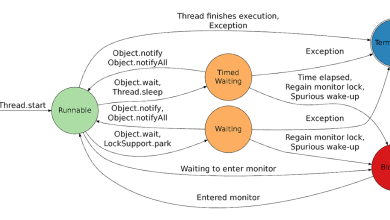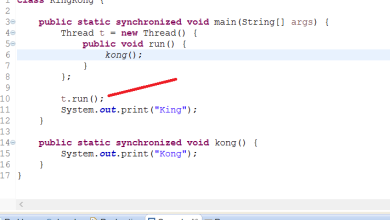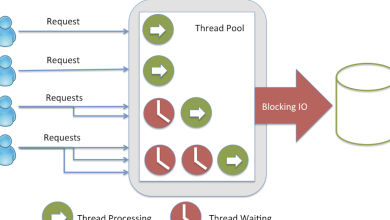10 Code Review Checklist and Best practices in Java
Code Review and Unit testing are some of the best development practices I always recommend, strive for, and enforce as much as possible. Even just by doing code review and Junit test case always offer positive results it can be improved a lot by constantly learning from our mistakes, others mistakes and by observing how others are doing it. I always try to get my code review done by someone with more technical and domain experience so that I can capture any domain-specific scenarios which have been missed during think through the process.
I also try to get my code reviewed with someone with less experience so that I can improve the code readability, have a four-eye check and most importantly I found that when I explain my code to someone as part of code review I myself discover many things which can be improved or left out.
Overall it always adds something and improves code quality and reduces bugs.
These are the things that I have been accumulated over the years but I also look forward to you guys contributing your experience, best practices for code review, and suggest how you guys do code review. These tips are independent of language and equally, apply to Java, ASP .NET, or C++ code.
And, if you in hurry, here is a simple Java code review check list you can follow while doing PR review or Pull Request review. Sooner of later this will also be automated by AI but its good to know these so that you can check if AI is doing its job properly or not.
10 points checklist on Code Review
1) Functional Requirement
 Does Code meet the functional requirement: first and foremost does code meets all requirements which it should meet, point out if anything has been left out.
Does Code meet the functional requirement: first and foremost does code meets all requirements which it should meet, point out if anything has been left out.
2) Side effect on existing code
Is there any Side effect of this change: Sometimes one change in your system may cause a bug in other upstream and downstream systems and it’s quite possible that a new developer or anyone who is writing code might not be available on that dependency?
This is often directly related to experience in the project and I found that the more you know about the system and its environment better you are able to figure this out.
3) Concurrency
Does the code is thread-safe? Does it have properly synchronized if using the shared resources? Does it free of any kind of deadlock or live-lock? Concurrency bugs are hard to detect and often surfaces in production. Code review is one place where you can detect this by carefully understand design and its implementation.
4) Readability and maintenance
Does the code is readable? Or is it too complicated for someone completely new? Always give value to readability as code is not just for this time it will remain there for a long time and you need to read it many times.
Another important aspect is maintenance as most of the software spends 90% time on maintenance and only 10% time on development it should be maintainable and flexible in the first place.
You can verify whether the code is configurable or not, look for any hard coding, find out what is going to be changed in the near future, etc.
5) Consistency
This is part of point 4 but I have made it another separate point because of its importance. This is the best thing you can have in your code which automatically achieves readability.
Since many developer and programmer take part in project and they have there own style of coding, it’s in best interest of everybody to form a coding standard and follow it in letter and spirit.
For example it’s not good someone using function initialize() and other is using init() for same kind of operation, keep you code consistent and it will look better, read better.
6) Performance
Another important aspect most important if you are writing high volume low latency electronic trading platform for high-frequency trading which strives for micro second latency.
Carefully monitor which code is going to execute at start-up and which is going to be executed in a loop or multiple times optimize the code which is going to execute more often.
7) Error and Exception handling
Ask does code handles bad input and exception? It should and that too with predefined and standard way which must be available and documented for support purpose.
I put this point well above on my chart while doing a review because failing on this point can lead to your application crash and not able to recover from a fault on other systems or another part of the same application.
8) Simplicity
Always see if there is any simple and elegant alternative available at-least give a thought and try. Many times first solution comes in mind is not the best solution so giving another thought is just worth it.
9) Reuse of existing code
See if the functionality can be achieved by using existing code, the advantage of doing this is that you are using tried and tested code which reduces your QA time and also gives you more confidence.
Introducing new libraries introduce a new dependency which means new chances of vulnerabilities and security risks. I prefer not to try anything fancy until it’s absolutely necessary.
10) Unit tests
Check whether enough JUnit test cases have been written and cover a sufficient percentage of new code. never let you pass the code without the Junit test because the developer often makes an excuse of time but believe me its worth writing it.
Earlier I have also said that at least that put a comment on your Java file that by whom it has been reviewed, what issue finds are out and status of those. This will make the whole process official and ensures that due diligence would be applied during code review.
This was the case when you are not using Git for code review, now with the Git integration on GitHub or BitBucket, you don’t need to do anything, every comment and resolution will be recorded automatically and you can always access all the pull requests.
But, if you are not using any of these which you should, then you can still follow the above best practice.
It’s also good to maintain your own code review checklist or a project wise code review checklist and use it every time while doing a review.
Java Code Review Check List
Here is a simple Java code review check list you can follow while doing PR review or Pull Request review. You can either remember it or print it and stick in your desk for easy reference.
Sooner of later this will also be automated by AI but its good to know these so that you can check if AI is doing its job properly or not.

That’s all about the top 10 Code review checklist and best practices you can follow while reviewing Java code. There are so many best practices but I have only included those which I follow and found interesting but as I had said earlier this is the area which always needs improvement and nobody is perfect on that.
So please contribute your ideas to code review and effective development.
Enjoy
Some older post you may like



